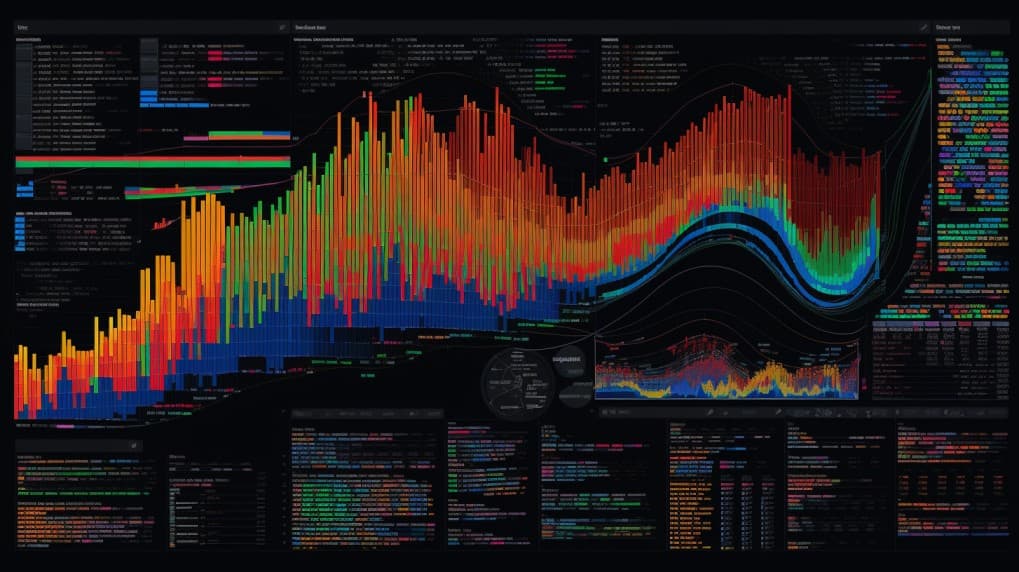
What is the KOKU ETF?
Investing in the financial markets can be both exciting and daunting. With a myriad of options available, it's crucial to understand the tools at your disposal before diving in. One such tool that has garnered attention is the KOKU ETF. In this article, we will provide you with a comprehensive overview of the KOKU ETF, shedding light on its features, investment strategy, and market coverage.
KOKU ETF: Overview
The KOKU ETF is designed to provide investors with exposure to equity markets in developed markets, excluding Japan. It employs a passive or indexing investment approach, seeking to replicate the performance of its Underlying Index. This index is meticulously constructed to track the equity markets' performance within specific countries. As of October 31, 2022, the Underlying Index comprised 1,274 securities, representing a diverse range of issuers from countries such as Australia, Germany, the United States, and more.
One unique aspect of the KOKU ETF's strategy is its replication methodology. The fund aims to mirror the Underlying Index's performance by investing directly in its component securities, closely matching their weightings in the index. This approach ensures that investors can potentially capture the index's returns accurately.
KOKU ETF: Subtopic 1 - Replication and Sampling
The KOKU ETF offers investors two primary strategies for tracking the Underlying Index: full replication and representative sampling. Full replication involves investing directly in the same securities and weightings as the Underlying Index. On the other hand, representative sampling entails constructing a portfolio that closely mirrors the index's characteristics while holding a subset of its securities.
The decision between these strategies depends on factors like limited availability or regulatory constraints of certain securities. The fund aims to ensure that its chosen strategy aligns with its investment objectives while maintaining a profile similar to the Underlying Index. This approach emphasizes the fund's commitment to accuracy and performance alignment.
[Image_placeholder]
KOKU ETF: Subtopic 2 - Sector Concentration
An essential consideration when investing in ETFs is sector concentration. The KOKU ETF aims to provide investors with exposure to various sectors within developed markets, excluding Japan. As of October 31, 2022, a significant portion of the Underlying Index was composed of issuers in the information technology sector, accounting for 21.56% of the index. This sector encompasses companies involved in software development, data processing, and manufacturing of electronic equipment..
Understanding sector concentration is crucial for investors looking to diversify their portfolios and manage risk effectively. It's essential to assess how the KOKU ETF's sector composition aligns with your investment goals and risk tolerance.
KOKU ETF: Subtopic 3 - Rebalancing and Classification
The KOKU ETF closely follows the rebalance schedule of the Underlying Index. Semi-annual rebalancing in May and November ensures that the fund's portfolio remains aligned with the index's composition and changes over time. Additionally, the fund's classification may evolve from non-diversified to diversified or vice versa based on market dynamics, index weighting changes, or other factors.
It's important for investors to stay informed about the fund's classification and any changes in its investment approach. This knowledge helps you make informed decisions aligned with your investment strategy.
Conclusion
In conclusion, the KOKU ETF provides investors with a unique opportunity to gain exposure to equity markets in developed countries (excluding Japan). Its indexing strategies, sector concentration, and adherence to the Underlying Index's performance make it an attractive option for those seeking a diversified investment approach. However, as with any investment, thorough research and alignment with your financial goals are key.
Disclaimer: This article is for informational purposes only and does not constitute investment advice. It is not providing any investment advisory services. The KOKU ETF or any securities referred to herein are not sponsored, endorsed, issued, sold, or promoted by MSCI. Always conduct your due diligence and consult with a financial advisor before making investment decisions.
KOKU ETF issuer
KOKU ETF official page
KOKU quote and analysis
Discover the top holdings, correlations, and overlaps of ETFs using our visualization tool.
Our app allows you to build and track your portfolio.
To learn more about the KOKU Xtrackers MSCI Kokusai Equity ETF, access our dedicated page now.
FAQ
What is the KOKU ETF?
KOKU ETF, is an exchange-traded fund that provides investors with exposure to companies operating in the relevant sector.
What is the underlying index that the KOKU ETF aims to track?
KOKU ETF aims to track the performance of a specific index, which includes companies involved in various aspects of the relevant industry.
What types of companies are included in the KOKU ETF?
KOKU ETF includes companies from the relevant industry, which may consist of specialized firms, equipment manufacturers, and other related entities.
How does the KOKU ETF work?
KOKU ETF functions by pooling investors' capital to purchase a diversified portfolio of related stocks, aiming to replicate the performance of the underlying index.
What are the advantages of investing in the KOKU ETF?
Investing in the KOKU ETF offers exposure to a specialized sector with potential for growth and innovation. It allows investors to diversify within the industry, which could experience significant advancements and expansion in the future.